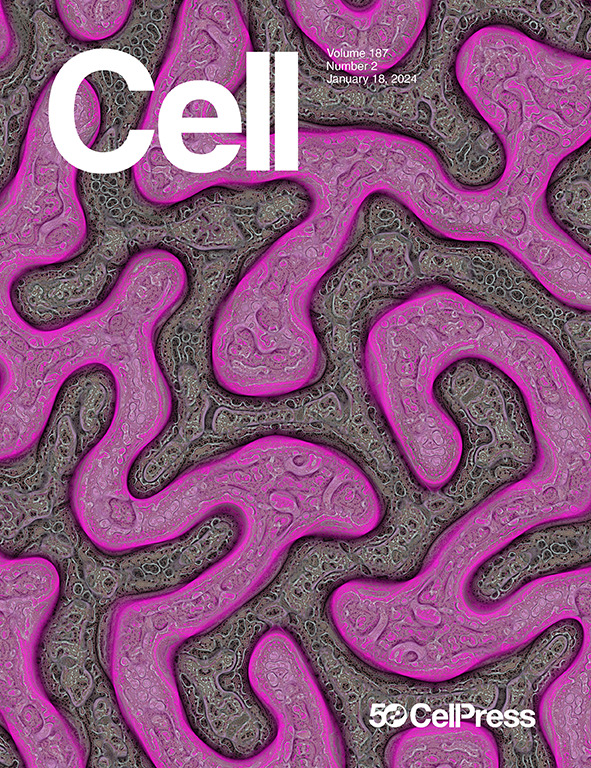A single-cell atlas reveals immune heterogeneity in anti-PD-1-treated non-small cell lung cancer
IF 45.5
1区 生物学
Q1 BIOCHEMISTRY & MOLECULAR BIOLOGY
引用次数: 0
Abstract
Anti-PD-(L)1 treatment is standard for non-small cell lung cancer (NSCLC), but patients show variable responses to the same regimen. The tumor immune microenvironment (TIME) is associated with immunotherapy response, yet the heterogeneous underlying therapeutic outcomes remain underexplored. We applied single-cell RNA and TCR sequencing (scRNA/TCR-seq) to analyze surgical tumor samples from 234 NSCLC patients post-neoadjuvant chemo-immunotherapy. Analyses revealed five distinct TIME subtypes with varying major pathological response (MPR) rates. MPR patients had elevated levels of FGFBP2+ NK/NK-like T cells, memory B cells, or effector T cells, while non-MPR patients showed higher CCR8+ Tregs. T cell clonal expansion analyses unveiled heterogeneity in non-MPR patients, marked by varying expansions of Tex-relevant cells and CCR8+ Tregs. Precursor exhausted T cells (Texp cells) correlated with recurrence-free survival, identifying a patient subgroup with reduced recurrence risk despite lack of MPR. Our study dissects TIME heterogeneity in response to chemoimmunotherapy, offering insights for NSCLC management.

单细胞图谱揭示了抗pd -1治疗的非小细胞肺癌的免疫异质性
抗pd -(L)1治疗是非小细胞肺癌(NSCLC)的标准治疗,但患者对同一方案的反应不同。肿瘤免疫微环境(TIME)与免疫治疗反应相关,但异质性的潜在治疗结果仍未得到充分探讨。我们应用单细胞RNA和TCR测序(scRNA/TCR-seq)分析了234例新辅助化疗免疫治疗后的非小细胞肺癌手术肿瘤样本。分析显示五种不同的TIME亚型具有不同的主要病理反应(MPR)率。MPR患者FGFBP2+ NK/NK样T细胞、记忆B细胞或效应T细胞水平升高,而非MPR患者CCR8+ Tregs水平升高。T细胞克隆扩增分析揭示了非mpr患者的异质性,其特征是tex相关细胞和CCR8+ Tregs扩增量不同。前体耗竭T细胞(Texp细胞)与无复发生存相关,确定了尽管缺乏MPR,但复发风险降低的患者亚组。我们的研究剖析了化疗免疫治疗的时间异质性,为非小细胞肺癌的治疗提供了见解。
本文章由计算机程序翻译,如有差异,请以英文原文为准。
求助全文
约1分钟内获得全文
求助全文
来源期刊

Cell
生物-生化与分子生物学
CiteScore
110.00
自引率
0.80%
发文量
396
审稿时长
2 months
期刊介绍:
Cells is an international, peer-reviewed, open access journal that focuses on cell biology, molecular biology, and biophysics. It is affiliated with several societies, including the Spanish Society for Biochemistry and Molecular Biology (SEBBM), Nordic Autophagy Society (NAS), Spanish Society of Hematology and Hemotherapy (SEHH), and Society for Regenerative Medicine (Russian Federation) (RPO).
The journal publishes research findings of significant importance in various areas of experimental biology, such as cell biology, molecular biology, neuroscience, immunology, virology, microbiology, cancer, human genetics, systems biology, signaling, and disease mechanisms and therapeutics. The primary criterion for considering papers is whether the results contribute to significant conceptual advances or raise thought-provoking questions and hypotheses related to interesting and important biological inquiries.
In addition to primary research articles presented in four formats, Cells also features review and opinion articles in its "leading edge" section, discussing recent research advancements and topics of interest to its wide readership.
 求助内容:
求助内容: 应助结果提醒方式:
应助结果提醒方式:


